Girard-Perregaux Laureato: An Underappreciated Royal Oak Alternative?
by Raman Kalra
Raman Kalra is the founder of The Watch Muse blog and has kindly agreed to share some of his articles with us here on Quill & Pad.
___________________________
It will surprise nobody that certain watches over the last 5 years have taken off in terms of popularity and become practically impossible to buy at an authorized retailer. Unless you are considered a loyal (read ‘high paying’) customer, “VIP”, or play the game of buying watches you don’t actually want to have a chance of getting the watch you do want.
Watches like the Rolex Submariner (and now any stainless steel Rolex), Audemars Piguet Royal Oak, Patek Philippe Nautilus and Vacheron Constantin Overseas all fall within this category. They have all become hard to get, so consumers are looking elsewhere. Which is great because there are a lot of solid watches out there, but it also means that the attainability issue is spreading.
However, fear not as there is still a unicorn out there that has not captured broader attention (yet): the Girard-Perregaux Laureato.
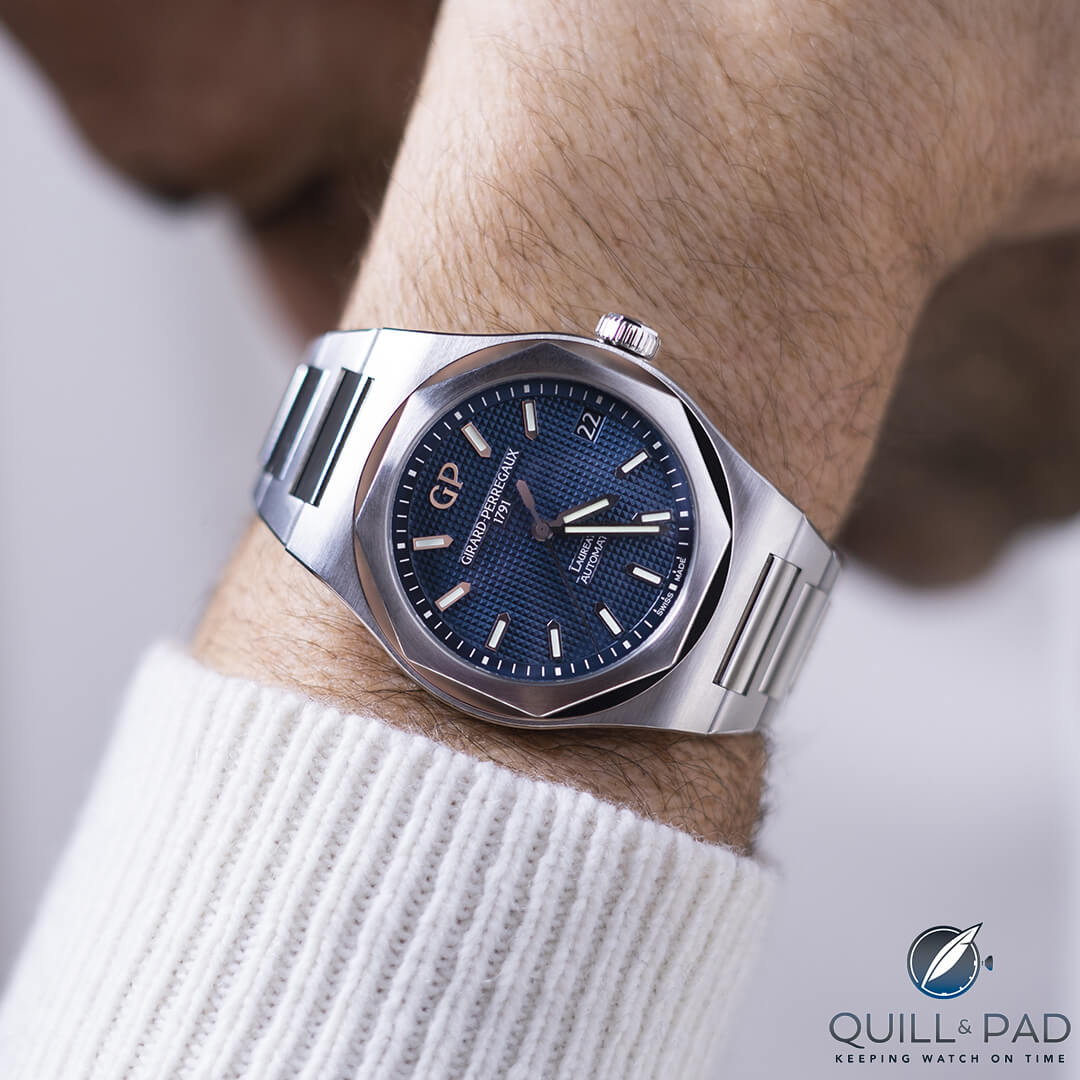
Girard Perregaux Laureato 42 on the wrist
The Laureato has the right ingredients to be in the same category as those watches mentioned above, yet it isn’t. You can walk into your local Girard-Perregaux AD, try one on, and even find them below retail on the secondary market. The Laureato is the watch for those that would like a Royal Oak but don’t want to be paying premiums, or want something a little more understated.
So why is the Girard-Perregaux Laureato worth considering and why has it not (yet) caught the eyes of the broader audience?
————————————————————————————————-
————————————————————————————————-
Brief Background
Let’s address the elephant in the room first. The Laureato looks very similar to the Royal Oak and Nautilus. Does that mean it is a just copy of these two? Not necessarily. Girard-Perregaux released the Laureato in 1975, 3 years after the Genta-designed Royal Oak was launched, and the Nautilus and Vacheron Constantin 222 came a year later. The Laureato was not Gerald Genta designed like the Royal Oak (and Nautilus), so there could have been some inspiration taken. But whatever happened, Girard-Perregaux jumped on the high end sports watch fashion as it picked up.
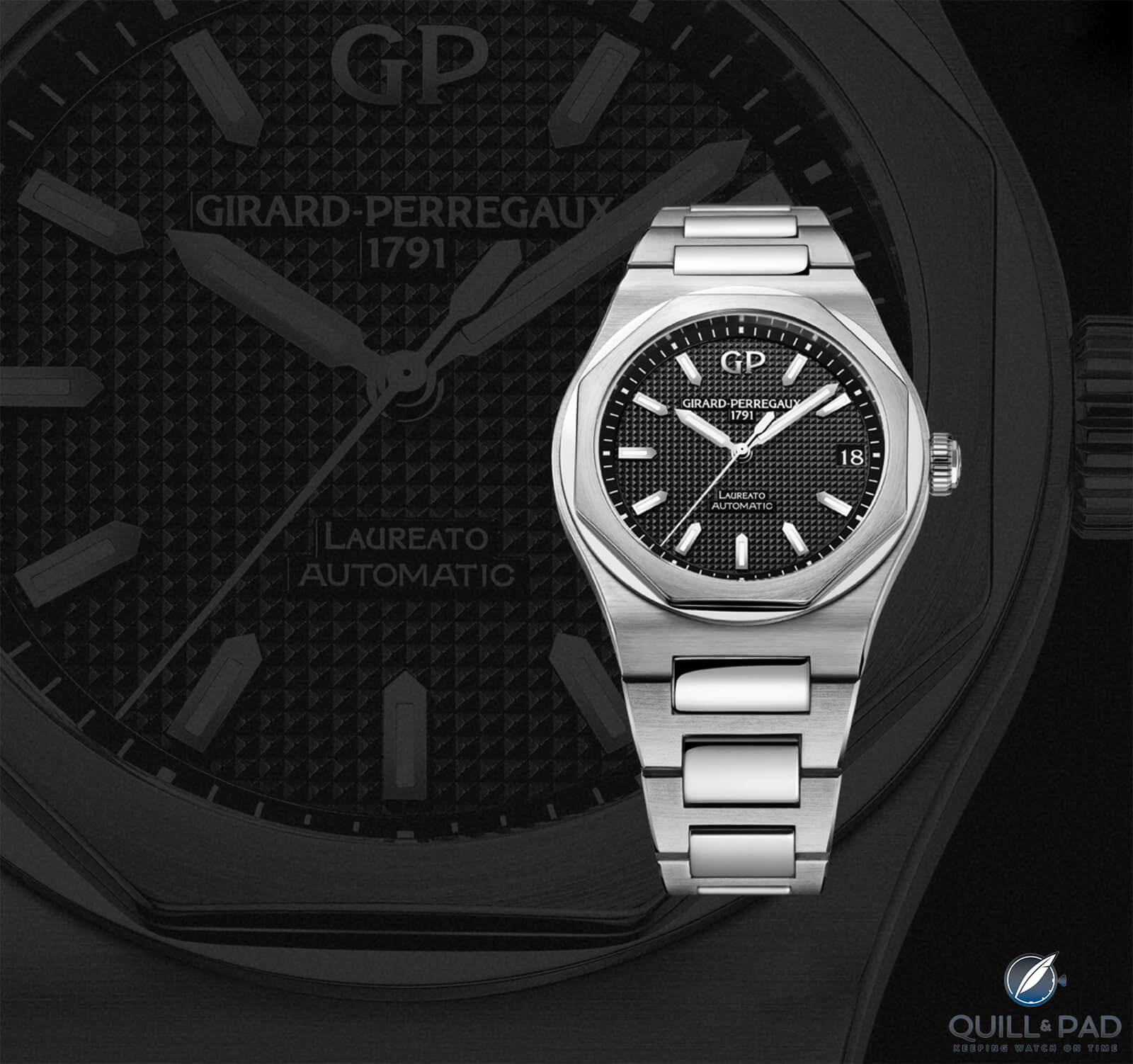
Girard Perregaux Laureato 42 with black dial
There are a few differences that are worth highlighting. It brings the story and history of the Laureato alive in understanding its origins. First and foremost, this was not the work of Gerald Genta, but was inspired by the work of Italian architect Arnolfo di Cambio (1245-1302) who designed the dome of the Santa Maria del Fiore cathedral in Florence. With that in mind, you notice a sense of softness when you look beyond the integrated bracelet and octagonal bezel.
The case is a fluid design with curved, uninterrupted lines from one side to the other. The octagon bezel on top of the round base gives you the impression the metal is viscous. The design is what you would expect from a 1970s sports watch, but it didn’t stop there. The original Laureato was quartz! Again, another very fitting feature for a ‘70s watch and further separation from the mechanical movement of the Royal Oak.
It might be a surprise that GP went down this route, but it was during the Quartz Crisis and Girard-Perregaux played a big role in pushing the quartz movement forward. Girard-Perregaux developed the first quartz movement to beat at 32,768 Hz, now the industry standard. No wonder then quartz was what they settled on.
————————————————————————————————-
————————————————————————————————-
Despite the winning formula, the Laureato did not receive a mechanical movement until 1995. Rather, it was a watch used to push forward quartz complications. In 1995, the first mechanical version was launched with the caliber 3100, although it did not become a permanent model in the collection.
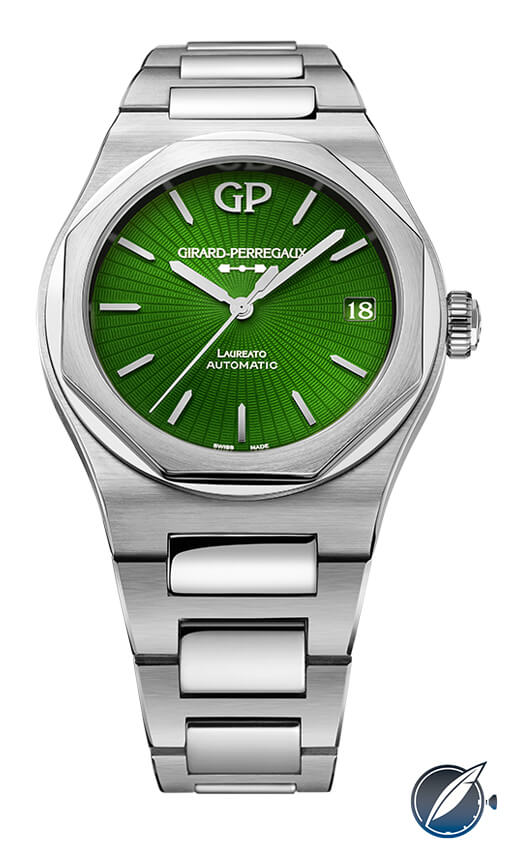
Girard Perregaux Laureato 42 green
There were some quirky releases and one-offs, until 2016 when it made a comeback for the 225th anniversary of Girard-Perregaux with a limited release (ref. 81000) of the Laureato, updated for modern tastes but paying homage to the original by being a thin sports watch. This model was limited to 225 pieces, but now we know it was just a taster of what was to come. The following year, the Laureato made a full comeback with a whole lineup and has been a focus for the brand since.
Girard-Perregaux Laureato
With the comeback of the Laureato, Girard-Perregaux ensured that it paid tribute to the original but catered to modern tastes. The case is 42 mm, although one of the best aspects of the collection is it is offered in several sizes.
It maintains a thin profile at 11mm, with a solid lug-to-lug of 49.1mm, helping it wear well on the wrist. Beyond the measurements, the watch features a stainless steel, tonneau style case with an integrated bracelet, giving it the full 1970s feel.
Now when comparing the Laureato to the Nautilus or Royal Oak, the case and bracelet are not as complex as Patek Philippe achieves, but rather, closer to the Royal Oak. The Laureato has polished center links on the bracelet and a good taper from the case down to the clasp.
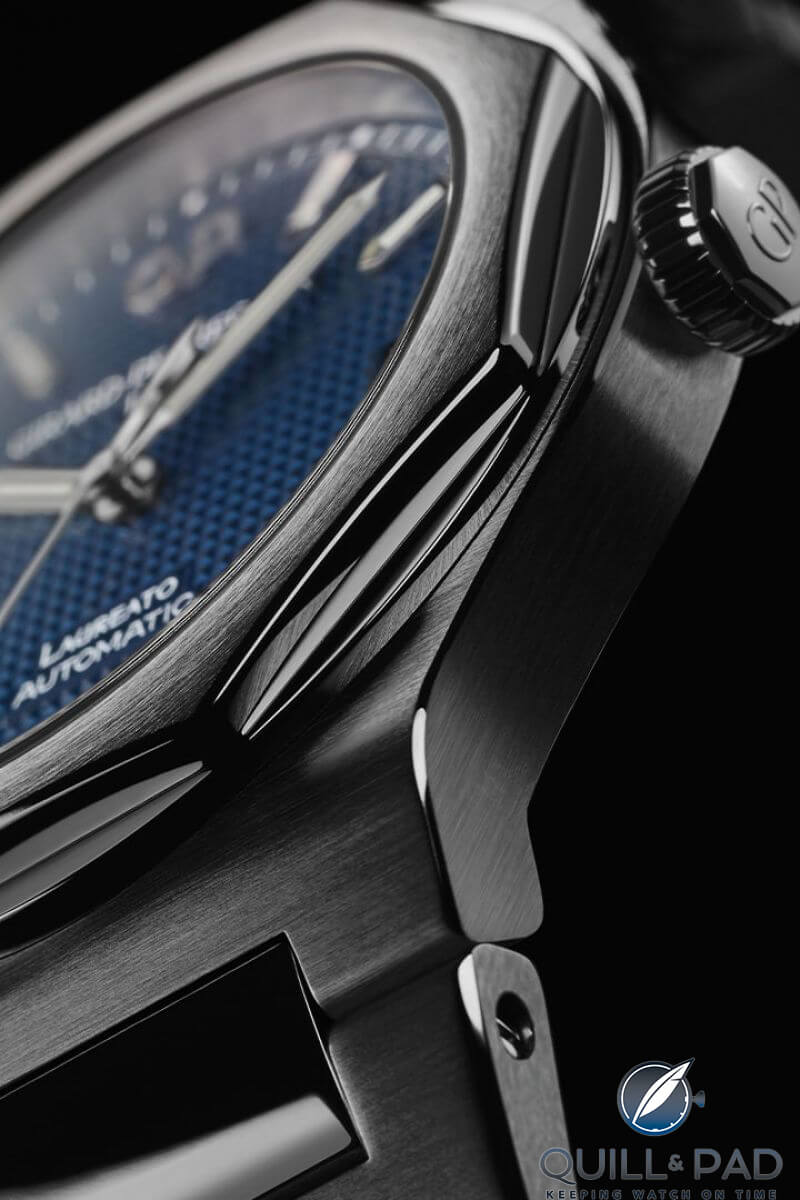
Girard Perregaux Laureato 42 lug and bracelet
But, what isn’t as obvious is the beveling along the edges that continue around the case of the Laureato. This is something that is hard to capture in photos, but one of the touches that add to the Laureato’s refinement.
————————————————————————————————-
————————————————————————————————-
And there are touches like this elsewhere. For example, across the top of the case, it has a horizontally brushed finish. However, along the case edge, it is brushed perpendicular to the top. Again, subtle refinements that highlight that this watch is a Girard-Perregaux. You can’t mention the case without addressing the bezel. It follows the same design cues as the original, meaning it is octagonal on top of a circular base.
Once again, as the first model, it is a pleasant blend of lines and curves giving the impression that the bezel is actually fluid. More than just the way it looks, the bezel serves a purpose. It is actually a physical fixture. The bezel is screwed into the case similar to what we see with case backs. This adds to the watch’s water resistance and, if you’re in the right company is a cool talking point.
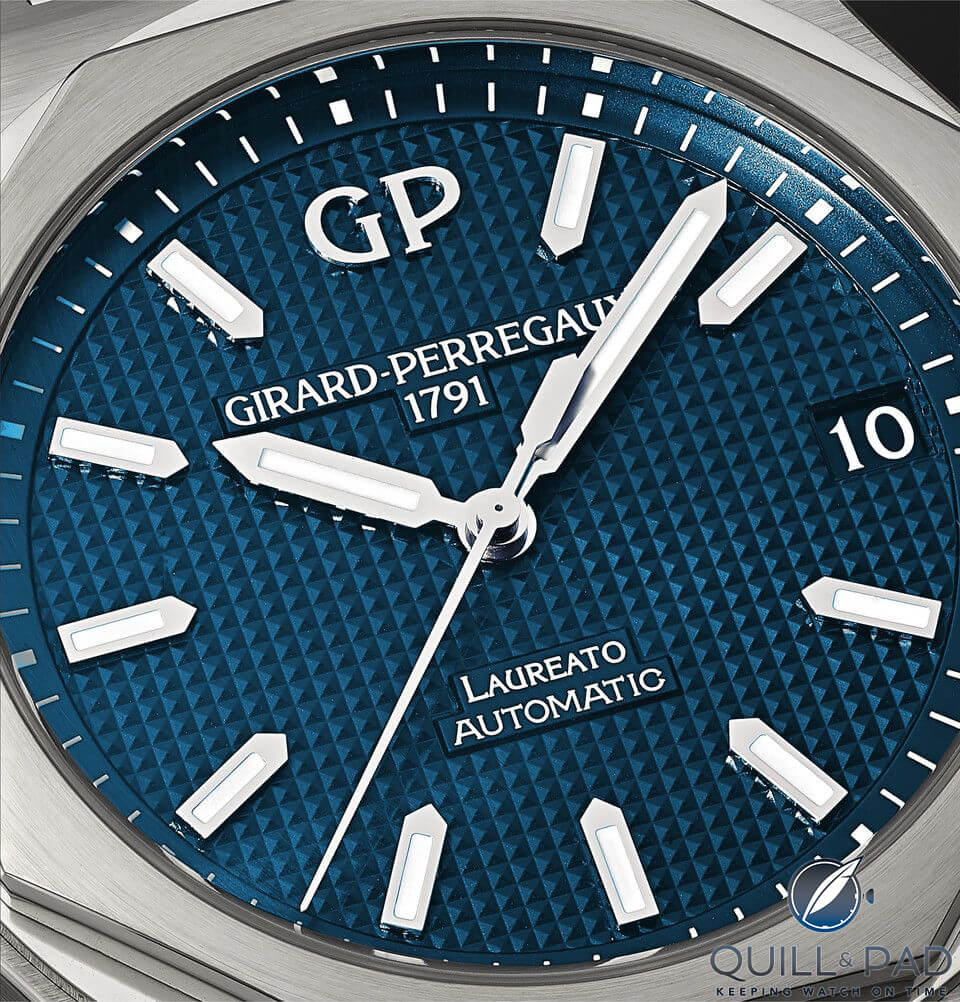
Girard Perregaux Laureato 42 dial
The dial also follows on from history as it comes with a Clous de Paris pattern. Granted, it is a textured pattern and can look similar to the Royal Oak from a distance, but if you look closer the Laureato is completely different. Where the Royal Oak’s Tapisserie dial has many straight lines, following the overall aesthetic, the Laureato Clous de Paris dial is more elevated squares that look like pyramids.
This results in the Laureato having a slightly deeper more three-dimensional look as those small pyramids capture light in a unique way. Regardless of which direction the light source is coming from, the light reflects in different directions across the dial, resulting in a range of shadows.
Small differences, big overall effect.
The indices are applied and filled with lume. Like the hands, they are rhodium plated and perfectly flat. Ignoring whether you like the flatness or not, they highlight the finishing quality.
At 12 o’clock you will find a brushed “GP”, followed by the full Girard-Perregaux, 1791 and Laureato Automatic. Minimal and effective. A small detail I find satisfying is the fact the brand name and 1791 perfectly take up two rows of the Clous de Paris pattern.
————————————————————————————————-
————————————————————————————————-
Inside the watch, the movement is an in-house automatic caliber variation of the GP1800 – GP01800-0025. It is one of the newer Girard-Perregaux movements, so you are gain the benefits of it being more modern with a longer power reserve at 54 hours than the older GP3000 movement family.
The movement is a larger diameter than older versions, so when you turn the watch over and view it through the sapphire case back the movement fills the casing. The finishing is good, although this is an area where Audemars Piguet and Patek Philippe at least partially justify the retail price differences.
The Laureato movement finishing is started mechanically and then finished by hand. There is Côtes de Genèves finishing across the rotor and bridge in different patterns (one circular and one straight) creating some depth. Overall, a very solid, in-house movement and worth the asking price.
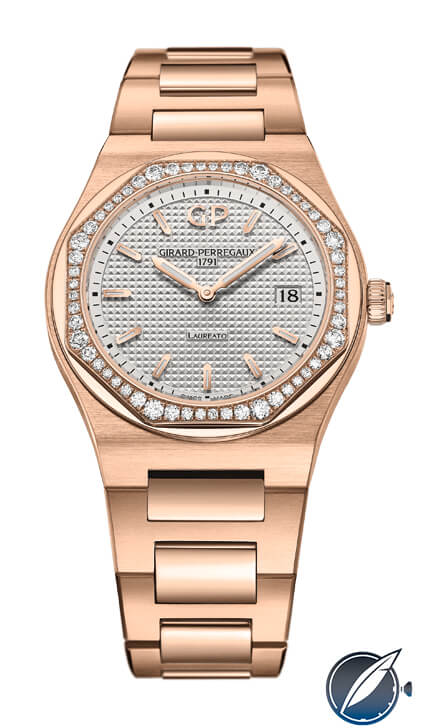
Girard Perregaux Laureato 34mm
One area I have not mentioned is the impressive variations of Laureato models on offer. There is the 42 mm time-only that I have focused on so far, but it is also available in 34 mm, now discontinued 38 mm, and 44 mm, as well as various complications.
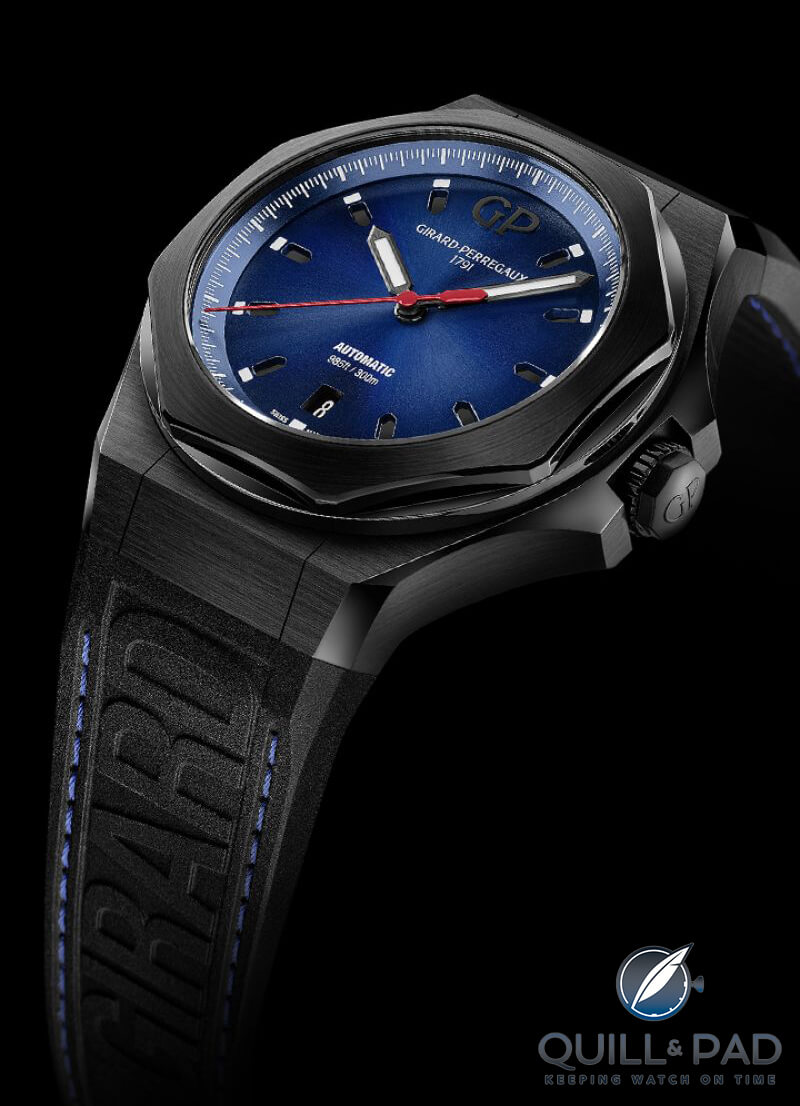
Girard Perregaux Laureato Absolute 44mm
Recently, there have also been updates that come without the Clous de Paris dials. Regardless of which model speaks to you, the main points remain the same: the Laureto is a very high-quality, worthy competitor for those looking at the Royal Oak.
————————————————————————————————-
————————————————————————————————-
If I could have my pick, it would either be one of the Eternity editions with the enamel dials as I feel the fashion of textured dials might come and go, whereas the solid, deep enamel look will always look good! Or, the 38 mm chronograph – a true panda dial in a size that works for me.
Why The Availability?
Everything about the Laureato sounds compelling, even down to the level of quality for the price point (especially when you compare it to similar-level Hublots!). However, they do not receive the same recognition as the competition. The average collector can only dream of buying any Royal Oak at a store, let alone the Royal Oak they want. And the Nautilus is way out of the ballpark!
So where did Girard-Perregaux go wrong? Or did they go wrong? The answer isn’t clear, but there a few reasons as to why this might be.
First and foremost, the brand name. Those who know, know who Girard-Perregaux is. The wider audience, however, is not likely to have spent much time finding out. No fault of their own, but before the rebirth of the Laureato, Girard-Perregaux’s watches have generally been uninspiring dress watches.
Those looking for a compelling all-rounder tend to focus on the sportier models, and this has only become a larger factor in recent years, meaning the Girard-Perregaux has been somewhat looked over. This has had knock-on effects. A large reason why the number of watch enthusiasts has grown in the last 5-10 years has been the accessibility of sharing pictures more broadly – a fancy phrase for social media. This has allowed people to see watches that would have been usually kept for watch meet-ups or forums.
Apart from increasing awareness, having a relatively unknown brand vs. Audemars Piguet and Patek Philippe has just not been as compelling to those new to high end mechanical watches. Less demand equals availability.
Secondly, it may be that the aesthetics just didn’t click.
The Laureato was right there in the mix of things right as integrated bracelet sports watches were taking off. They have a claim to this design, similar to Tissot with the PRX, where they are not jumping on current demand but have a watch in the back catalog that they can use.
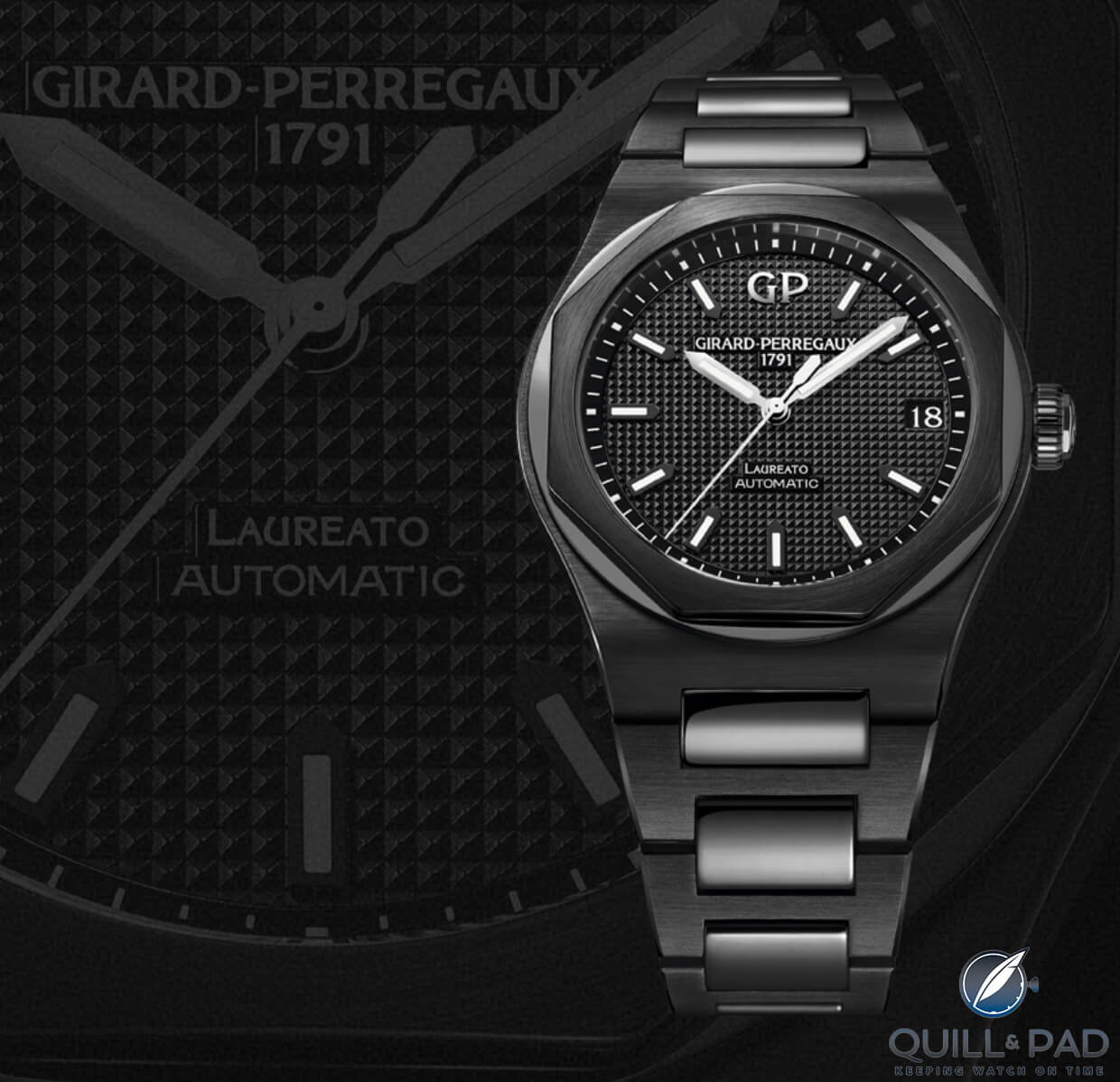
Girard Perregaux Laureato 42
This can be both positive and negative. The Royal Oak and Nautilus have been in production constantly and that means they have seen some continuity and refinement, but also they have been visible through the digitalization of the watch world (social media and blogs). They have been covered more, they have been seen more on influential people and so have become the ‘originals’ regardless of the history and which year in the 1970s they launched.
The Laureato enters the picture relatively late in 2016/2017 and while it looks a lot like those consistent other watches that people are after, it unfortunately, falls into a watch that is great but looks like a ‘copy’. We know this is wrong, although you can see how this happens.
————————————————————————————————-
————————————————————————————————-
And it doesn’t stop there. Looking at the pictures of the Laureato, it looks relatively flat despite most them having the Clous de Paris dial. The indices and hands are perfectly flat, and the bracelet and case finishing rely on small details such as the beveling and the direction of the brushed finishing.
The beauty of the Laureato is hard to capture in photos. It is a watch that exceeds expectations in person. This all then leads back around to social media and the ability to get a good photo leading to likes and building a following. It is just tougher with the Laureato – less demand and more availability.
Finally, it could come down to value retention. Some view watches as pure investments, others aim to retain value as much as possible (who wouldn’t?) and the rest just don’t care. The split between these categories is anyone’s guess, but let’s just say there are a fair few in the first two categories. When considering an investment or value retention, you look at the RRP and then compare it to the secondary market on Chrono24 or eBay to give you an idea of how much money you might get back in 5 years when you look for something new. If you were to do this for the Laureato, the numbers are likely to be smaller than you imagine.

Girard Perregaux Laureato 42 green
As mentioned earlier, some models are even available are below retail for unworn examples (at the time of writing). This immediately puts off the ‘investment’ group and gives some pause for thought for those wanting as much retention as possible. These consumers might then move on and look for the next watch. This then affects the brand perception as it does not fall into the Rolex, Audemars Piguet, Patek Philippe category. The circle completes.
Is the Laureato worth considering?
This is what it all comes down to. Is the Laureato a watch worth your time, consideration and money? Of course! This is one to see in person to fully appreciate how much is on offer. There are several why you can still easily find a Laureato, and it will come down to your motives behind buying such a watch.
There is no right or wrong answer here. All luxury watch purchases are unnecessary and driven by how a watch makes you feel. However, I can’t help but think that the Laureato is the thinking person’s Royal Oak. You get a similar watch, with the history, from a high-quality brand at potentially half the price.
On top of that, there are different sizes and complications so you can really end up with the watch that you want. Yes, there are some aspects of finishing that might not rival the watches it tries to compete against, but it is no slouch either.
Unless you are completely sold on owning a Royal Oak or Nautilus, the Laureato should be in the conversation. Who knows, you might prefer the octagonal bezel of the Royal Oak, with some of the added softness of the oval Nautilus. Not forgetting having money left over as well.
For more information, please visit www.girard-perregaux.com/row_en/81010-11-431-11a.html
Quick facts: Girard-Perregaux Laureato 42 mm
Indications: centre seconds, date, hours and minutes
Dial : blue with Clous de Paris pattern
Dimensions: 42 mm x 11 mm
Case: stainless steel
Movement: Caliber GP01800, automatic winding, 4 Hz/28,800 vph, 28 jewels
Power reserve: 54 hours
Water resistance: 100 m
Bracelet: steel with triple folding clasp
Price: $14,300
You can read more articles by Raman Kalra at www.thewatchmuse.com.
* This article was first published 13 May 2023 at Girard-Perregaux Laureato: The Underappreciated Royal Oak Substitute?
You might also enjoy:
Stainless Steel Patek Philippe Nautilus Market Madness: Thoughts On The Current Market Situation
False Scarcity And Steel Sports Watches: A Collector’s View
Why The Patek Philippe Nautilus Is King: A Collector Weighs In
Did Gérald Genta Design History’s First Luxury Steel Sports Watch For IWC (And Not Audemars Piguet)?

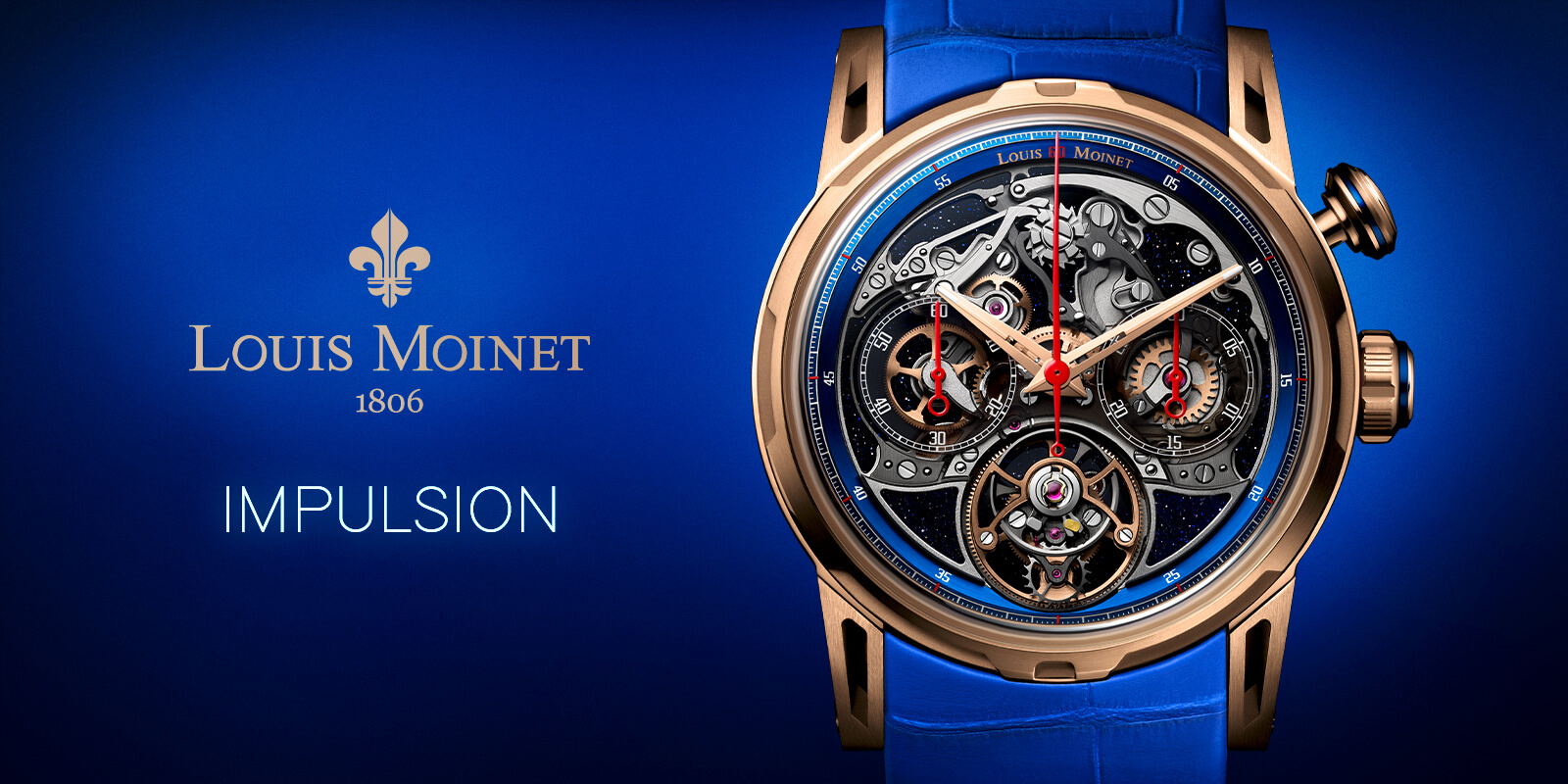
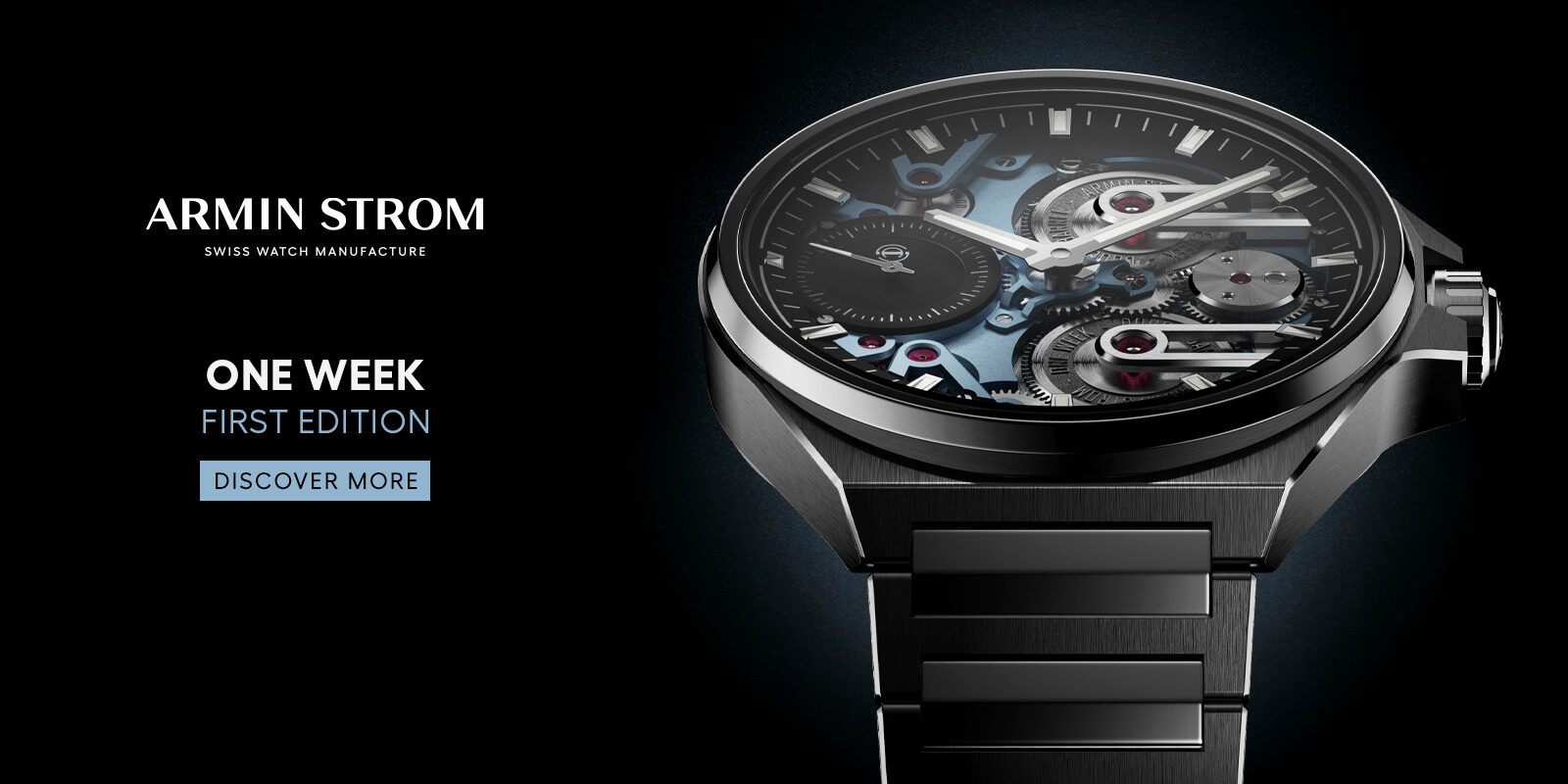
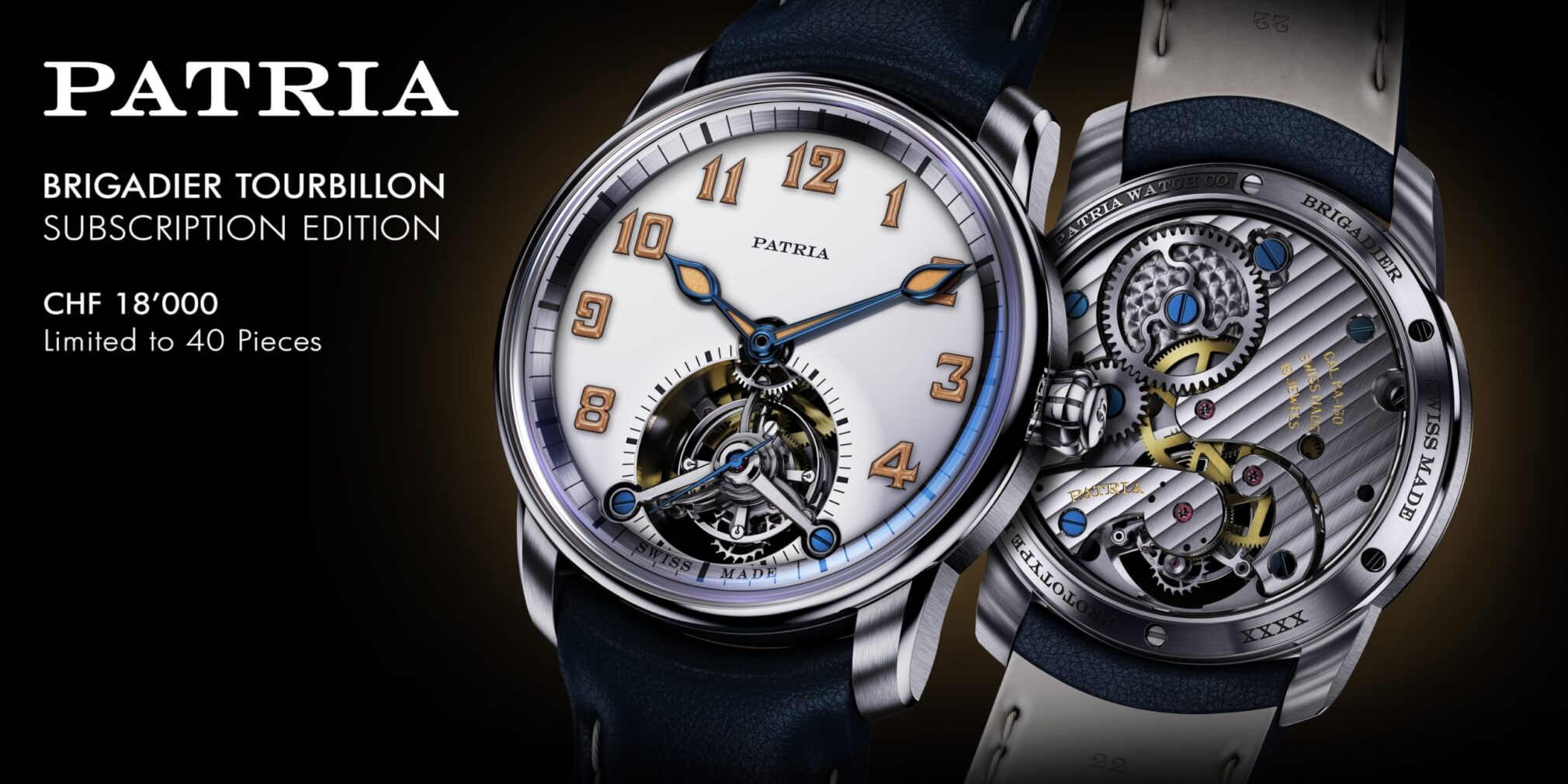


Leave a Reply
Want to join the discussion?Feel free to contribute!